Magnificent Padparadscha Sapphire
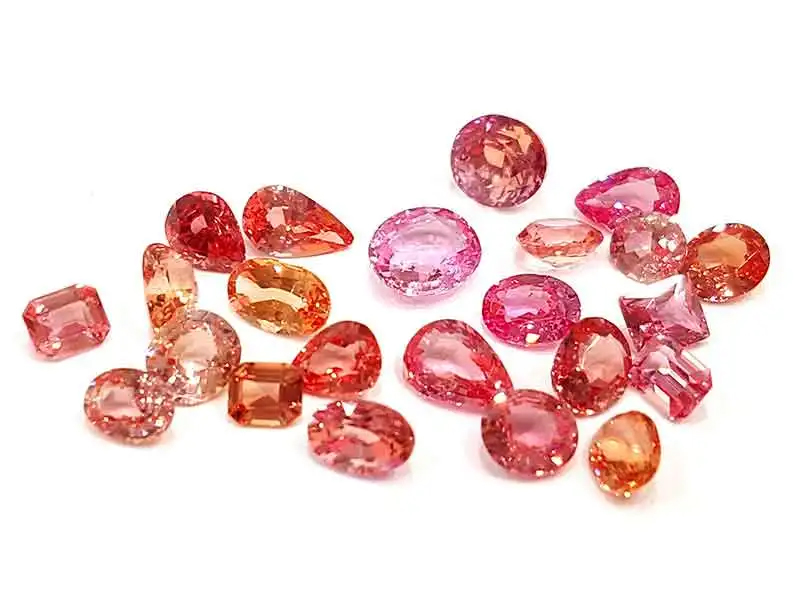
Magnificent Padparadscha Sapphire
The rarest of all Sapphires
It is called Padmaraga in Sri Lanka, but it is more commonly known as Padparadscha around the world. The name Padmaraga is derived from Sanskrit, meaning lotus (Padma) color (Raga), signifying the vibrant blend of pink and orange tones reflected by the gemstone. Original locality for Padparadscha sapphire is Sri Lanka (ancient Ceylon). Padparadscha sapphire tones vary from the color of a lotus which is more pink than orange, to the color of the sunset which is far more orange than pink. This ultra-rare mix of pink and orange is without a doubt the rarest color in a sapphire, making Padparadscha the king of all sapphires and is one of the most expensive gemstones.
The real Padparadscha sapphire is said to be found only in Sri Lanka, while some varieties are also available in Madagascar, Tanzania and Vietnam. The Sri Lankan sapphire is claimed to be the most precious of all and comes in mesmerizing shades of pink and orange. Sapphires in general are heat treated to improve clarity and colour saturation. However, a gemstone completely free of any treatment (Untreated/Unheated) is more valuable to the consumer in the long term since Unheated/Untreated gemstones are becoming rare everyday. However, even heated Padparadscha sapphires are quite expensive if they are good quality.
The beauty of Padparadscha sapphire is highly depended on personal preference, to decide which color of stone is the most pleasing to your eye. Nevertheless, Padparadscha is one absolutely stunning of a gem to pairing with its extraordinary rarity, remains as one of the most coveted gemstones in the world. Demand is so high and growing, thus the prices continue to climb every year. In 2017 in Hong Kong, Sotheby’s sold a Padaparadscha of 8.01ct, Sri Lankan origin, with no indication of heating, for USD 780,800. In 2018 Princess Eugenie got engaged to Jack Brooksbank with a Padparadscha sapphire flower ring creating an interesting appeal for them in the market.
Choosing the right Padparadscha sapphire must be a detailed and meticulous act. Different colors of the sapphire represent different values and fetch different prices, therefore expert advice must be sought before making a purchase. Only a trusted jeweler or gemmologist can give you the right guidance in selecting the original Padparadscha sapphire. We at Prestige Gems can guide you choose the perfect stone for your budget. After all, this could be one of your most prized possessions, and you must have nothing but the best!
5 Secrets of the Magnificent Padparadscha Sapphire
In the vast and colorful kingdom of gemstones, there are rare beauties, and then there are legends. The Magnificent Padparadscha Sapphire belongs firmly to the latter. It is a gem so scarce, so ethereal in its coloration, that many seasoned collectors will go a lifetime without ever holding a fine example. Its name, whispered with reverence, evokes images of a tropical sunset melting into the delicate petals of a lotus blossom. This is not just a stone; it is poetry forged by the Earth. Here in Sri Lanka, the sacred ground from which this gem first emerged, the Padparadscha is more than a treasure—it is a cornerstone of our national heritage. This definitive guide will take you deep into the heart of this phenomenal gemstone, exploring the secrets of its color, its unparalleled rarity, and the reasons why it reigns as the undisputed king of all sapphires.
Table of Contents
- The Poetic Origin: What is a Magnificent Padparadscha Sapphire?
- The Meaning Behind the Mystical Name: “Padma Raga”
- A Gemological Definition of a Legend
- The Alchemy of Color: Unraveling the Science Behind the Magnificent Padparadscha Sapphire
- A Delicate Dance of Trace Elements
- How its Unique Chemistry Sets it Apart
- The Great Color Debate: Defining the True Hue of a Magnificent Padparadscha Sapphire
- The Strict Criteria of Gemological Science
- The Non-Negotiable Need for Certification
- Ceylon’s Crown Jewel: The Unmatched Provenance of Sri Lanka’s Magnificent Padparadscha Sapphire
- Why Sri Lanka is the Benchmark for Quality
- The Global Search for Other Sources
- A Guide for the Connoisseur: How to Evaluate a Magnificent Padparadscha Sapphire
- Color: The Absolute Priority for a Magnificent Padparadscha Sapphire
- Clarity: The Natural Fingerprints Within the Gem
- Cut: The Artistry That Awakens the Stone’s Soul
- Carat Weight: The Exponential Rise of Rarity and Value
- Investment and Legacy: Why the Magnificent Padparadscha Sapphire is a Wise Acquisition
- A Top-Tier Investment-Grade Gemstone
- The Ultimate Heirloom
- Frequently Asked Questions (FAQs) About the Magnificent Padparadscha Sapphire
- Conclusion: Owning a Piece of the Sunset
1. The Poetic Origin: What is a Magnificent Padparadscha Sapphire?
Before we delve into its scientific properties and market value, it is essential to understand the cultural and historical soul of the Padparadscha. Its identity is inextricably linked to the natural beauty of its homeland, Sri Lanka.
The Meaning Behind the Mystical Name: “Padma Raga”
The name “Padparadscha” is a direct inheritance from the Sinhalese language, derived from the term “padma raga,” which translates to “lotus color.” This is not a casual comparison. The lotus flower holds a sacred place in Sri Lankan culture and Buddhism, symbolizing purity, enlightenment, and beauty. The gem’s color was seen as a perfect reflection of the delicate, warm pinkish-orange hues found in the heart of a blooming lotus. This poetic name perfectly captures the gem’s ethereal and almost spiritual beauty, setting it apart from stones named after their mineral composition or a physical property.
A Gemological Definition of a Legend
Gemologically speaking, the Magnificent Padparadscha Sapphire is an exceptionally rare variety of the mineral corundum. While most people associate corundum with blue sapphires or red rubies, it can occur in a full spectrum of colors. The Padparadscha is defined by its unique and delicate mixture of pink and orange hues, coexisting within a single stone. This is not a stone that is merely pinkish-orange; it must display both colors distinctly and in a harmonious balance. This strict requirement is a key reason for its profound rarity.
2. The Alchemy of Color: Unraveling the Science Behind the Magnificent Padparadscha Sapphire
The sublime color of the Padparadscha is the result of a serendipitous and highly specific geological recipe that occurred millions of years ago. Like all sapphires, its base is aluminum oxide (), which is colorless in its pure form. The color comes from the introduction of other trace elements into the crystal’s structure.
A Delicate Dance of Trace Elements
The science behind the Padparadscha’s color is a fascinating lesson in gemstone chemistry. The beautiful pink hues in sapphires are caused by the presence of chromium (). The yellow and orange tones, conversely, are typically caused by the presence of iron () and specific color centers. The Magnificent Padparadscha Sapphire is born only when the concentrations of both chromium and iron are perfectly balanced within the corundum crystal.
If there is too much chromium, the stone will be classified as a pink sapphire. If there is too much iron or the specific color centers for orange are too dominant, it will be an orange sapphire. The Padparadscha exists only in that slim, almost miraculous, intersection where neither color overpowers the other. This delicate chemical dance is incredibly rare in nature, making the formation of a Padparadscha a true geological anomaly. For more information on how trace elements color corundum, authoritative sources like the Gemological Institute of America (GIA) provide in-depth analysis.
How its Unique Chemistry Sets it Apart
This unique combination of coloring agents also gives the Padparadscha its signature glow. Unlike some gems that can appear dark or overly saturated, the Padparadscha often has a light to medium tone that allows light to travel through the stone, creating a soft, luminous brilliance. This intrinsic glow is one of the most prized characteristics of fine Ceylon Padparadschas.
3. The Great Color Debate: Defining the True Hue of a Magnificent Padparadscha Sapphire
Because of its immense value and rarity, the exact definition of the Padparadscha color has been a subject of intense debate among gemologists and dealers for decades. What one person calls a Padparadscha, another might label a pink or orange sapphire.
The Strict Criteria of Gemological Science
To bring order to the market, the world’s leading gemological laboratories have established very strict criteria for a stone to earn the coveted “Padparadscha” classification. While slight variations exist between labs, the general consensus is:
- It must be a sapphire.
- It must exhibit a combination of pink and orange color when viewed face-up.
- The color must be of a light to medium tonal range.
- The color distribution must be uniform and stable.
A stone that is predominantly orange with a minor pinkish modifier, or one that is overwhelmingly pink with a slight orange tint, will not qualify. The balance must be harmonious. The term “salmon” is often used, but even this can be misleading. The most accurate and universally accepted description remains the original: the color of a lotus at sunset.
The Non-Negotiable Need for Certification
Given the subjectivity of color perception and the enormous price difference between a true Padparadscha and a fancy pink or orange sapphire, an independent lab certificate is not a luxury—it is an absolute necessity. A certificate from a respected institution like the GIA, Gübelin, or SSEF, which explicitly identifies the stone as a “Padparadscha Sapphire,” is the only way to guarantee its identity and value. Any seller offering a significant stone without this documentation should be approached with extreme caution.
4. Ceylon’s Crown Jewel: The Unmatched Provenance of Sri Lanka’s Magnificent Padparadscha Sapphire
While trace deposits of Padparadscha-like sapphires have been found in other locations, Sri Lanka (formerly Ceylon) remains the undisputed and classic origin for this magnificent gem. The term itself is rooted in our language, and the standard against which all others are judged is the Ceylon Padparadscha.
Why Sri Lanka is the Benchmark for Quality
The alluvial gem gravels of Sri Lanka have produced Padparadschas of a quality and character that are considered archetypal. Ceylon Padparadschas are celebrated for their often lighter, more delicate tones and exceptional clarity. This combination creates that signature soft luminosity that is so highly sought after. The history of gem mining in Sri Lanka dates back over 2,500 years, and the artisanal, small-scale methods used here have a lower environmental impact and a rich cultural heritage. Owning a Ceylon Padparadscha is to own a piece of this incredible legacy. At Prestige Gems Store, we are deeply proud to be purveyors of this national treasure, offering certified, ethically sourced Ceylon Padparadschas that represent the pinnacle of gemstone beauty.
The Global Search for Other Sources
In recent decades, deposits of sapphires with pinkish-orange hues have been discovered in places like Vietnam and Madagascar. While some of these stones are beautiful, they often have a different character from their Sri Lankan counterparts. For example, some Madagascan stones can have a much higher saturation of orange, which can fall outside the strict definition of Padparadscha. While these gems have their own merit, the prestige, history, and unmatched beauty of the Ceylon stone ensure it remains the connoisseur’s choice.
5. A Guide for the Connoisseur: How to Evaluate a Magnificent Padparadscha Sapphire
Assessing a gem of this caliber requires a trained eye and a deep appreciation for nuance. The standard 4Cs (Color, Clarity, Cut, Carat) are applied, but their importance is weighted very differently.
Color: The Absolute Priority for a Magnificent Padparadscha Sapphire
Color is everything. It accounts for the vast majority of the stone’s value. The ideal Magnificent Padparadscha Sapphire will exhibit a perfect visual balance between pink and orange. This color should be viewed under various light sources (daylight, incandescent light) to appreciate its full character. A fine stone will hold its beautiful color regardless of the lighting environment. The saturation should be vibrant but not overly dark, allowing the stone to sparkle and glow from within.
Clarity: The Natural Fingerprints Within the Gem
As a naturally formed gemstone, some inclusions are expected. In fact, a completely flawless Padparadscha would be highly suspect and require rigorous testing to rule out a synthetic origin. The standard is “eye-clean,” meaning no inclusions are readily visible to the naked eye. Common inclusions like fine rutile needles (“silk”), mineral crystals, or healed fractures are part of the gem’s natural identity and proof of its authenticity.
Cut: The Artistry That Awakens the Stone’s Soul
The cut of a Padparadscha is paramount to displaying its unique color. A master lapidary will sacrifice weight to achieve the best possible face-up color and brilliance. The cut should be symmetrical, with facets that reflect light evenly across the stone, eliminating any washed-out areas or “windows.” Common shapes include oval and cushion cuts, as these shapes tend to preserve weight while beautifully showcasing the color.
Carat Weight: The Exponential Rise of Rarity and Value
The Magnificent Padparadscha Sapphire is exceptionally rare in any size. Most stones found are under two carats. A fine quality Padparadscha between two and five carats is considered a world-class treasure. Above five carats, they are the stuff of legends, often destined for museums or the collections of royalty. The price per carat does not increase linearly; it leaps exponentially as the size increases, reflecting this extreme rarity. For more on the general properties of sapphires, you can consult resources like Wikipedia.
6. Investment and Legacy: Why the Magnificent Padparadscha Sapphire is a Wise Acquisition
Beyond its sheer beauty, the Padparadscha is one of the most astute purchases one can make in the world of high-end gemstones.
A Top-Tier Investment-Grade Gemstone
The Padparadscha belongs to an elite group of colored gemstones whose value has shown consistent and strong appreciation over time. Its extreme rarity, coupled with rising demand from discerning collectors in Asia, Europe, and North America, has created a very robust market. As the known deposits in Sri Lanka and elsewhere are slowly depleted, the value of existing high-quality stones is projected to continue its upward trajectory, making it a stable and tangible asset.
The Ultimate Heirloom
More than an investment, a Magnificent Padparadscha Sapphire is the ultimate heirloom. It is a gem that tells a story—of a specific place on Earth, of a moment of geological magic, and of the discerning taste of its owner. Passing down a gem of this significance is to bestow a legacy of beauty, rarity, and value that will be treasured for generations. It is a unique statement, far more individualistic than a diamond and far rarer than a ruby.
7. Frequently Asked Questions (FAQs) About the Magnificent Padparadscha Sapphire
1. What makes a Magnificent Padparadscha Sapphire so rare and valuable? Its rarity stems from its unique color, which requires a precise and seldom-occurring balance of pink and orange hues caused by specific trace elements. This, combined with high demand and limited sources (primarily Sri Lanka), makes it one of the most valuable colored gemstones in the world.
2. How can I be sure my gem is a true Magnificent Padparadscha Sapphire? The only way to be certain is to insist on a certificate from a major, internationally recognized gemological laboratory (like GIA). The report must explicitly state the gem’s identity as a “Padparadscha Sapphire.” Visual inspection alone is not sufficient.
3. Is a Magnificent Padparadscha Sapphire suitable for an engagement ring? Absolutely. As a variety of corundum, it has a hardness of 9 on the Mohs scale, making it exceptionally durable and perfect for a ring intended for daily wear. It offers a unique, romantic, and incredibly sophisticated alternative to a traditional diamond.
4. Are heated Padparadscha sapphires less valuable? An unheated Padparadscha of fine quality is the rarest of the rare and will command the absolute highest prices. However, many Padparadschas undergo standard heat treatment to enhance their color and clarity. These stones are still incredibly valuable and make up a significant portion of the market. The key is full disclosure of any treatments.
5. Besides Sri Lanka, where else are these Magnificent Padparadscha Sapphires found? While Sri Lanka is the classic source, some pinkish-orange sapphires are also found in Madagascar and Vietnam. However, these stones often have a different color character, and the market still holds the Ceylon Padparadscha as the ultimate benchmark for quality and prestige.
8. Conclusion: Owning a Piece of the Sunset
To gaze into a Magnificent Padparadscha Sapphire is to hold a piece of the sunset in your hand. It is to witness the perfect, fleeting moment when the warm orange of the dying sun kisses the soft pink of the evening sky. This is a gem that transcends mere adornment; it is an experience, a work of art, and a symbol of the profound beauty that our planet can create. Its deep roots in Sri Lankan heritage, its incredible rarity, and its poetic soul make it a treasure without equal. For the discerning individual who seeks not just a gemstone but a story, there is no more profound or magnificent choice.




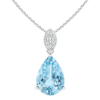
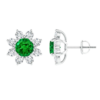



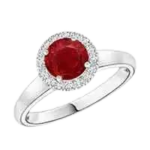 Ladies Rings
Ladies Rings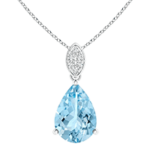 Pendants
Pendants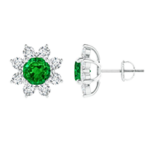 Earrings
Earrings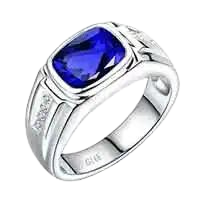 Gent’s rings
Gent’s rings